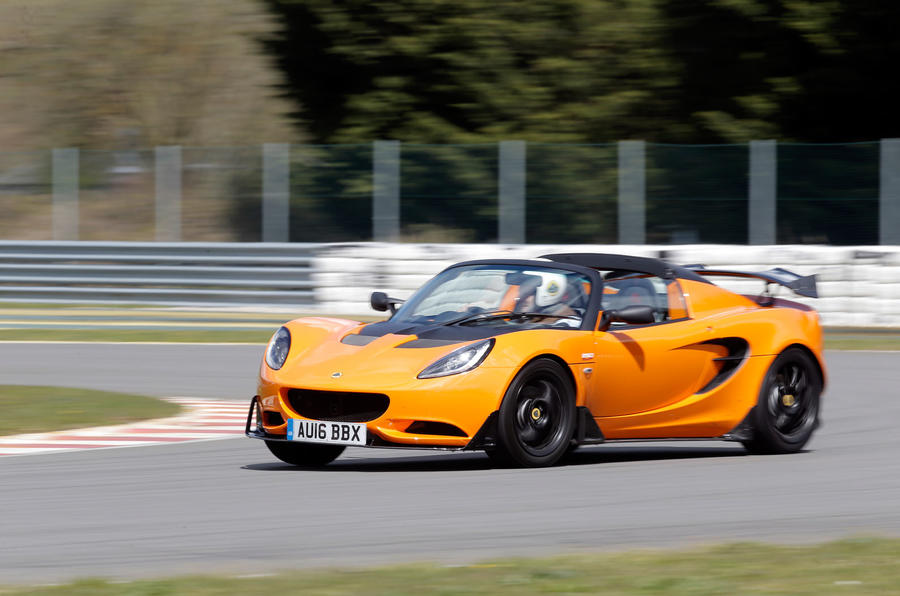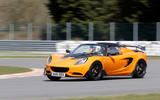What is it?
Just how track-optimised is the new Lotus Elise Cup 250? Consider this for an opener: beyond the dramatic new aero and gorgeous forged wheels, you don’t even get a roof as standard. Sure, it can be optioned in at no extra cost, but it shows most clearly Lotus’s intent with this car. If you want an Elise to drive hard on road and track, this is the car you need.
Beyond the obvious changes, there are myriad detail tweaks to make the Cup 250 a significantly faster car than the Cup 220 that it replaces. Perhaps most notable are the new, wider front tyres, the super-sticky Yokohama A048s measuring 195/50 now, as opposed to 175/55 before. That’s a substantial amount more rubber on a small car. Further dynamic optimisation comes courtesy of Bilstein dampers, Eibach springs, AP Racing front brake calipers and an adjustable front anti-roll bar.
With Lotus CEO Jean-Marc Gales’ unflinching focus on making new Lotus products as slender as possible, this Elise has also been through Hethel’s Lightweight Laboratory to save kilos. To that end, the new lithium-ion battery sheds 10kg, the carbon seats 6kg and those wheels another 1.5kg. Best wear your thin jumper when driving, then, just to make the best of it. For the full 250 Cup experience – and to mirror the car seen here – the Carbon Aero pack must also be optioned. It replaces the standard front splitter, rear wing, diffuser and floor extensions with the black stuff, saving another 10kg.
In its leanest form the Elise Cup 250 weighs 921kg, which isn't a great deal for 243bhp to motivate along a B-road. Lotus claims a 0-60mph time of 3.9sec – easily believable given the superb traction – and a top speed of 154mph. More tellingly, it’s 4.0sec quicker than the already very rapid Cup 220 around the Lotus test track. In fact, at 1min 32sec, this little Elise laps as fast as the much more powerful Lotus Exige V6 S.










































Join the debate
Add your comment
Shining light
many reasons
Who so much heaver now?